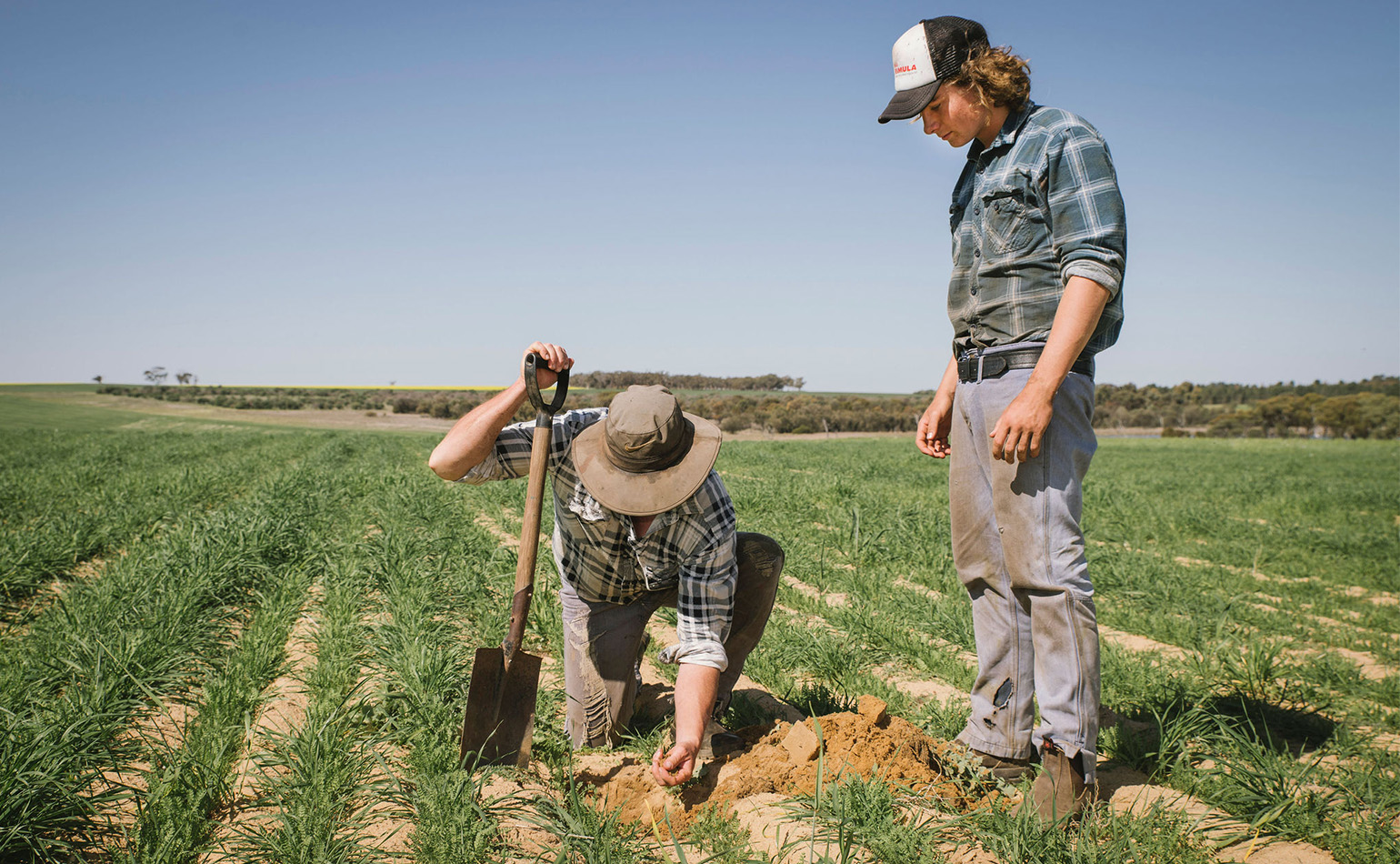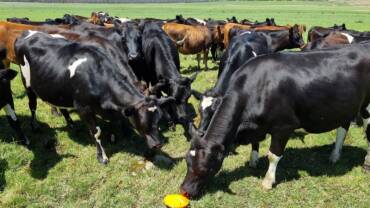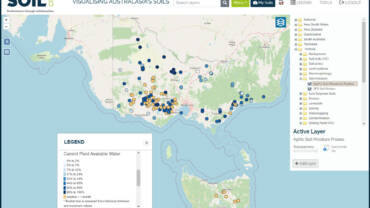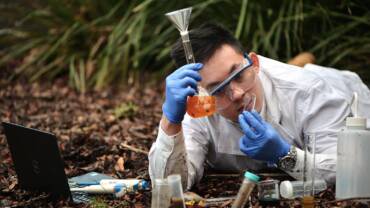Why do farmers adopt soil management practices?
News | Posted Apr 09,2020Working with farmer groups from across Australia, this project is finding some interesting factors that influence why some farmers adopt (or do not adopt) particular soil management practices.
The Soil CRC project Why soil management practices are adopted, led by Associate Professor Vaughan Higgins, is collaborating with Western Australian No-Tillage Farmer’s Association, MacKillop Farm Management Group, Birchip Cropping Group, Riverine Plains Inc, Central West Farming Systems, Eyre Peninsula Agricultural Research Foundation and NRM North (Tasmania) to find out more.
The project aims to understand why some farmers adopt or do not adopt soil management improvement practices. The first phase which identifies the social drivers that influences adoptability has been completed.
Preliminary findings have shown that there are a series of factors that influence adoptability.
- Continuity of the farm – adoptability is influenced by phases of farm expansion, consolidation and improvement, with each involving different strategies for inter-generational management of soil.
- Trustworthiness and validation – trust in the soil improvement technologies and practice, and who is promoting it, is a key consideration. Farmers will more likely consider adoption of a technology or practice if it has been evaluated locally and is endorsed by trusted non-commercial sources.
- Agronomists as intermediaries – local agronomists have an important role in translating soil science research in ways that are relevant to local farming conditions. Agronomists are often highly trusted and as such play a central role in helping farmers ‘make sense’ of soil improvement technologies and practices, but they are often disconnected from research organisations and rely more on local networks of farmers and practical learning across these.
- Looking to local innovators – farmers rely on ‘leading’ farmers in a region testing approaches at scale before they consider adopting or adapting them. This means that a few early innovators take a risk for the larger group, yet they are not usually considered as integral to agricultural innovation.
- Relevance to locally-defined needs and challenges – a key issue across all farming groups is how to manage soil variability across space and depth. On-farm trials in the local area are crucial for farmers in assessing the capacity of soil improvement technologies and practices to manage soil variability issues, and these will often require maintenance of long-term trial sites.
Based on the analysis of this data, the project team believes that there needs to be a shift in emphasis from identifying individual farm level “barriers” to adoption, towards supporting the processes of innovation, trialling and learning within the greater farming networks.
Key points identified are:
- Building trust across networks – develop research priorities for soil improvement that are driven by, and support, local trials conducted by farming groups.
- Co-development of knowledge – work with farming groups to ensure that outputs developed are relevant to locally-defined soil management needs and challenges.
- Using agronomists as ‘sensemakers’ – work with trusted local agronomists in translating data so that it makes sense to farmers and can be applied on-farm (data can take the form of research findings, or information generated from technologies such as variable rate technology or grid sampling).
- Utilising farming groups as a trusted source – use locally respected innovators – those who are regarded by their peers as having achieved improved soils through persistence and experimentation – as ‘change champions’.
- Utilising farming groups to promote caring for soil as critical to farm continuity – create/promote communities of practice where farmers can discuss and share stories about how they care for their land and soil – the experimentation, challenges and achievements.
This project serves to highlight the importance of involving farmer groups in the identification of priorities, development of proposals, implementation of projects, interpretation of results and communication of findings.
The Soil CRC recognises that these principles are critical to increased adoption of soil improvement techniques and technologies and is attempting to achieve a meaningful two-way dialogue between scientists and farmers in its project activities.
The next phase of the research will develop criteria of adoptability, refined through a second round of workshops with landholders and regional farming groups later this year, that will enable farming knowledge and regional-scale soil priorities to be better integrated into soil research and extension.





